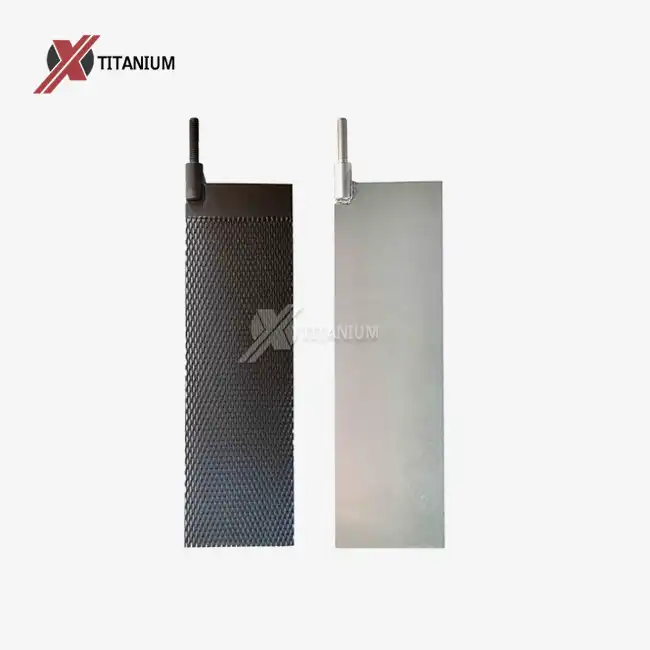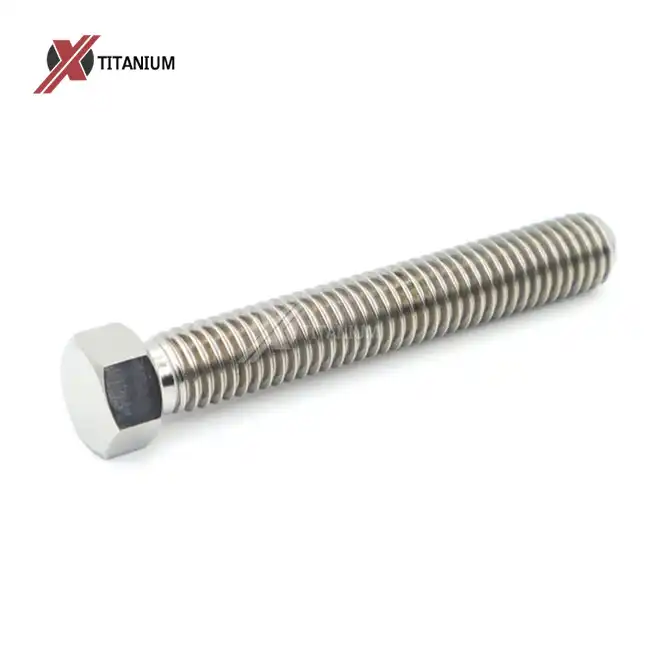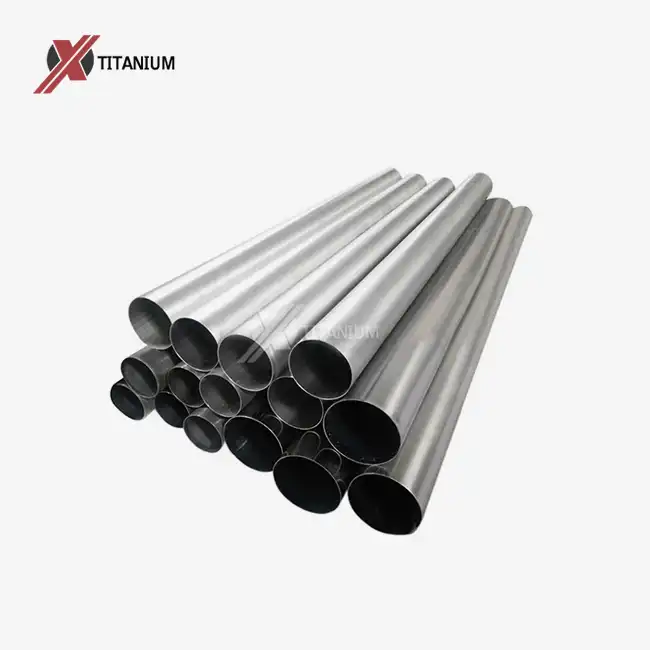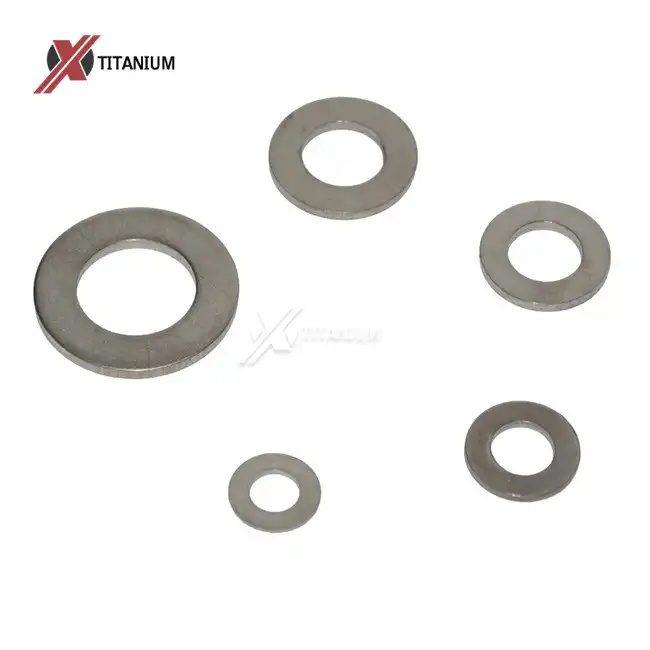Comprehending the Unique Properties of Nickel Titanium Memory Wire
Shape Memory Effect: A Game-Changing Characteristic
The shape memory effect is one of the most remarkable properties of nickel titanium memory wire. This unique characteristic allows the material to "remember" its original shape and return to it when heated above a specific temperature. This phenomenon occurs due to a reversible, temperature-dependent phase transformation between two crystal structures: martensite at lower temperatures and austenite at higher temperatures.
When the wire is in its martensitic phase, it can be easily deformed. However, upon heating to its transformation temperature, it undergoes a phase change to austenite, reverting to its pre-set shape. This ability to recover from large strains makes nickel titanium memory wire invaluable in various applications, from medical stents that expand inside blood vessels to actuators in aerospace technology.
Superelasticity: Unparalleled Flexibility and Resilience
Another extraordinary property of nickel titanium memory wire is its superelasticity, also known as pseudoelasticity. This characteristic allows the wire to undergo large deformations without permanent damage, returning to its original shape once the stress is removed. Unlike conventional materials that deform plastically beyond their elastic limit, superelastic Nitinol can recover strains of up to 8% without residual deformation.
This superelastic behavior stems from a stress-induced phase transformation between austenite and martensite. When stress is applied, the austenitic structure transforms into martensite, allowing the material to accommodate large strains. Upon removal of the stress, the material reverts to austenite, recovering its original shape. This property makes nickel titanium memory wire ideal for applications requiring high flexibility and durability, such as orthodontic archwires and eyeglass frames.
Biocompatibility and Corrosion Resistance: Ideal for Medical Applications
Nickel titanium memory wire boasts excellent biocompatibility and corrosion resistance, making it a preferred material in the medical industry. Its non-reactive nature and compatibility with human tissues make it suitable for long-term implants and medical devices. The wire's ability to resist corrosion in bodily fluids and other harsh environments ensures its longevity and reliability in various medical applications.
Furthermore, the corrosion resistance of nickel titanium memory wire extends beyond medical uses. It performs exceptionally well in marine environments, industrial settings, and other corrosive conditions where traditional materials might fail. This resilience contributes to the wire's long-term performance and reliability across diverse applications.
Comparative Analysis: Nickel Titanium Memory Wire vs. Stainless Steel
Fatigue Resistance and Cyclic Loading
When comparing the long-term performance of nickel titanium memory wire to stainless steel, fatigue resistance is a crucial factor. Nitinol exhibits superior fatigue resistance under cyclic loading conditions, outperforming stainless steel in applications requiring repetitive deformation.
Stainless steel, while durable, can experience fatigue failure after prolonged cyclic stress. In contrast, nickel titanium memory wire can withstand millions of loading cycles without significant degradation in its mechanical properties. This exceptional fatigue resistance is attributed to Nitinol's unique microstructure and its ability to undergo reversible phase transformations, which effectively dissipate energy and prevent the accumulation of damage.
Corrosion Resistance in Harsh Environments
Both nickel titanium memory wire and stainless steel are known for their corrosion resistance. However, Nitinol often surpasses stainless steel in this aspect, particularly in challenging environments. In saline solutions, bodily fluids, and marine settings, nickel titanium memory wire demonstrates superior resistance to pitting and crevice corrosion compared to many grades of stainless steel.
The excellent corrosion resistance of Nitinol is due to the formation of a stable titanium oxide layer on its surface. This protective layer self-heals when damaged, providing long-lasting protection against corrosive attacks. In contrast, while stainless steel also forms a protective chromium oxide layer, it can be more susceptible to breakdown in certain aggressive environments, potentially leading to localized corrosion over time.
Long-term Stability and Functional Properties
The long-term stability of mechanical and functional properties is another area where nickel titanium memory wire often outperforms stainless steel. Nitinol's shape memory and superelastic properties remain stable over extended periods, even under challenging conditions. This stability ensures consistent performance in applications such as actuators, sensors, and medical implants.
Stainless steel, while maintaining its strength and corrosion resistance over time, lacks the unique functional properties of Nitinol. In applications requiring shape memory or superelasticity, stainless steel cannot match the long-term performance of nickel titanium memory wire. This difference is particularly evident in fields like biomedicine and aerospace, where the ability to recover from large deformations or change shape in response to temperature is crucial.
Applications Showcasing the Long-Term Performance of Nickel Titanium Memory Wire
Medical Implants and Devices
The medical field has embraced nickel titanium memory wire for its exceptional long-term performance. In cardiovascular applications, Nitinol stents have revolutionized the treatment of arterial blockages. These stents can be compressed into a small diameter for insertion and then expand to their pre-set shape once deployed in the artery. The superelastic properties of Nitinol allow these stents to flex with the natural movements of the blood vessel, reducing the risk of restenosis and providing better long-term outcomes compared to stainless steel stents.
Orthodontic archwires made from nickel titanium memory wire offer another example of superior long-term performance. These wires provide consistent, gentle forces over extended periods, allowing for more efficient tooth movement with less discomfort compared to traditional stainless steel wires. The shape memory effect of Nitinol enables these wires to maintain their effectiveness throughout the treatment process, adapting to changes in tooth position and requiring fewer adjustments.
Aerospace and Actuator Technologies
In the aerospace industry, nickel titanium memory wire has found applications in actuator systems and adaptive structures. The material's ability to generate significant force during shape recovery makes it ideal for compact, lightweight actuators. These actuators can operate reliably over thousands of cycles, maintaining their performance characteristics in the challenging environments encountered in aerospace applications.
For instance, Nitinol-based actuators have been used in aircraft to control wing surfaces, optimizing aerodynamic performance under various flight conditions. The long-term stability of Nitinol's shape memory properties ensures consistent actuation over the lifespan of the aircraft, outperforming traditional hydraulic or electric systems in terms of reliability and maintenance requirements.
Consumer Products and Industrial Applications
The durability and functional stability of nickel titanium memory wire have also led to its adoption in various consumer products and industrial applications. In the eyewear industry, Nitinol frames offer unparalleled flexibility and durability. These frames can withstand significant deformation without permanent damage, maintaining their shape and fit over extended periods of use.
In industrial settings, Nitinol couplings and fasteners provide reliable, maintenance-free connections in piping systems and other applications. The superelastic properties of these components allow them to accommodate thermal expansion and contraction, as well as vibration, without loosening or fatigue. This long-term reliability reduces maintenance costs and downtime compared to traditional fastening methods.
Conclusion
Nickel titanium memory wire consistently outperforms stainless steel in long-term applications, particularly where shape memory, superelasticity, and corrosion resistance are crucial. Its unique properties enable it to maintain functionality and structural integrity over extended periods, even in challenging environments. From medical implants to aerospace actuators, Nitinol's superior fatigue resistance, corrosion resistance, and stable functional properties make it the material of choice for high-performance, long-lasting applications.
At Baoji Chuanglian New Metal Material Co., Ltd., we specialize in manufacturing high-quality nickel titanium memory wire for diverse applications. As a reliable nickel titanium memory wire manufacturer, we are dedicated to providing precision-engineered products that deliver consistent performance and durability. Our expertise in titanium and rare metal products ensures that our Nitinol wire meets the highest standards of performance and reliability. Whether you're developing cutting-edge medical devices, aerospace components, or innovative industrial solutions, our nickel titanium memory wire can provide the long-term performance and unique properties your application demands. For more information or to discuss your specific needs, please contact us at info@cltifastener.com or djy6580@aliyun.com.
FAQ
What manufacturing techniques are used for nickel titanium memory wire?
Nickel titanium memory wire can be produced through various techniques, including cold rolling, hot rolling, annealing, and pickling. The specific method depends on the desired properties and application.
What surface finishes are available for Nitinol wire?
Surface finishes for Nitinol wire include bright, polished, pickled, acid-cleaned, and sandblasted, depending on the intended use and environmental conditions.
How is the quality of nickel titanium memory wire tested?
Quality testing for Nitinol wire typically includes hardness tests, bending tests, and hydrostatic tests to ensure it meets the required specifications and performance standards.
References
1. Pelton, A. R., Stöckel, D., & Duerig, T. W. (2000). Medical uses of nitinol. Materials Science Forum, 327, 63-70.
2. Mohd Jani, J., Leary, M., Subic, A., & Gibson, M. A. (2014). A review of shape memory alloy research, applications and opportunities. Materials & Design, 56, 1078-1113.
3. Petrini, L., & Migliavacca, F. (2011). Biomedical applications of shape memory alloys. Journal of Metallurgy, 2011, 501483.
4. Neelakantan, L., Zglinski, J. K., Frotscher, M., & Eggeler, G. (2013). Design and fabrication of a bending rotation fatigue test rig for in situ electrochemical analysis during fatigue testing of NiTi shape memory alloy wires. Review of Scientific Instruments, 84(3), 035102.
5. Duerig, T., Pelton, A., & Stöckel, D. (1999). An overview of nitinol medical applications. Materials Science and Engineering: A, 273, 149-160.




